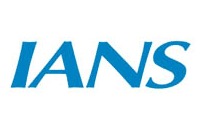Researchers have developed a data transfer system that can transmit information 10 times faster than a USB. The new link pairs high-frequency silicon chips with a polymer cable as thin a strand of hair.
According to the researchers, this system in future may boost energy efficiency in data centers and lighten the loads of electronics-rich spacecraft.
“There’s an explosion in the amount of information being shared between computer chips — cloud computing, the internet, big data. And a lot of this happens over conventional copper wire,” said lead researcher Jack Holloway from the Massachusetts Institute of Technology.
“But copper wires, like those found in USB or HDMI cables, are power-hungry — especially when dealing with heavy data loads.
“There’s a fundamental tradeoff between the amount of energy burned and the rate of information exchanged,” Holloway added.
Despite a growing demand for fast data transmission through conduits longer than a meter, the researcher says the typical solution has been “increasingly bulky and costly” copper cables.
The team’s new link draws on benefits of both copper and fiber optic conduits, while ditching their drawbacks.
For the study, presented at the IEEE International Solid-State Circuits Conference, the team engineered low-cost chips to pair with the polymer conduit.
Typically, silicon chips struggle to operate at sub-terahertz frequencies. Yet the team’s new chips generate those high-frequency signals with enough power to transmit data directly into the conduit.A
That clean connection from the silicon chips to the conduit means the overall system can be manufactured with standard, cost-effective methods, the researchers said.
The new link also beats out copper and fiber optic in terms of size.
“The cross-sectional area of our cable is 0.4 millimeters by a quarter millimeter. So, it’s super tiny, like a strand of hair,” the researchers said.
Despite its slim size, it can carry a hefty load of data, since it sends signals over three different parallel channels, separated by frequency.
The researchers say the cable could “address the bandwidth challenges as we see this megatrend toward more and more data.”
–IANS

